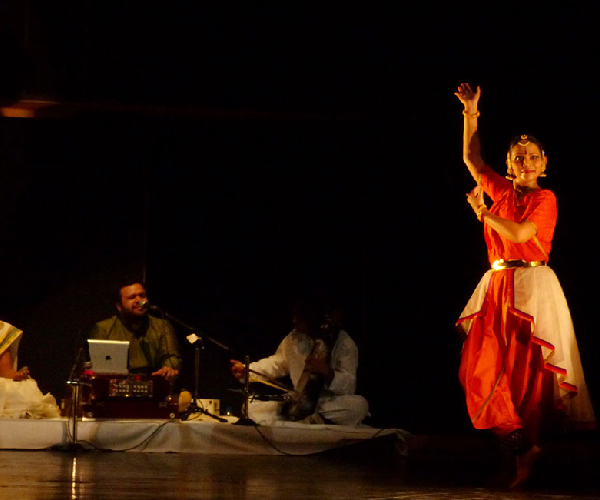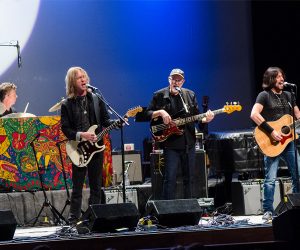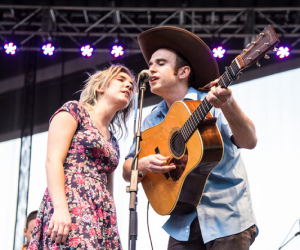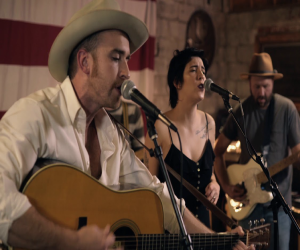Music is integral to dancing and there are many different instruments that can be used for it. Ever since the birth of bhratnatyam, it has been closely associated with a number of instruments. In particular, certain musical pieces are considered essential to accompany and enhance each performance.
Smt.Geetha Saraswathy, the Guru of Geethalayam school of Bharatham in Chennai (https://geethalayam.com/) says that in Bharatnatyam, the vocal support given by music varies depending on what type of dance you’re doing but also includes cymbals, violin, veena (a stringed instrument), flute and mridangam(an Indian drum).
Cymbal:
The cymbal provides a steady beat to the dancer and audience as well. It is used by nattuvanaars for devotional dance performances, providing support in more complicated choreography with intricate teermanams. The sound of this instrument also helps maintain homogeneity among those playing various instruments in an orchestra while allowing each performer’s individual style to shine through.
Mridangam:
The mridangam is the main percussion instrument in classical Indian music. It follows as a metronome to guide dancers, especially feet during nritta sequences and gives special emphasis on certain moods by playing quick or soft drumming for emotions such as rage or knocking at doors.
Violin:
The strength of a song is in the hands and heart of not just its vocalist but also the instrumentalists playing alongside. The violin, or veena can add beauty to any song by adding emotion and feeling into every note they play. For example if one is performing an item that was dedicated to Lord Krishna then it would be even more powerful with instruments such as drums which are associated with him being played during performance.
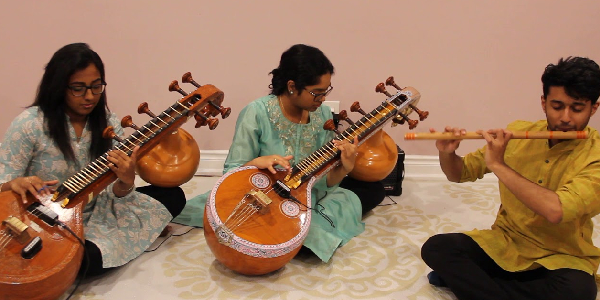
Veena:
The veena is the most important instrument in bharathaynatyam because it provides the elements of sruti, laya and sahitya. The main attraction that sets this apart from other instruments for classical dance performance is its mellow tonal quality which can be used to evoke a meditative atmosphere as seen with many performances.
Flute:
The sound of a flute can be heard in the background as we watch one dancer gracefully move her way across stage, flowing like water. The other dancers are all doing their own thing on either side and behind this woman- they’re playing instruments that complement each other’s melodies perfectly. A veena sounds off to our left while drums play softly nearby for us; cymbals clang together from afar even though there is no drummer around them at all!
Ragas in Music:
In Indian music, dance is an art form that requires both the dancer and musician to work together. Musicians need a variety of techniques in order to give dancers guidance on how they move their feet so as not overstep or miss beats; while at the same time a singer would know when it’s appropriate for musicians to add flourishes or embellishments (or perhaps even other instruments). In this way, each artist can contribute his/her own talents without overshadowing any one element.
For more emotional pieces of music, the composer will often use ragas such as Mukhari, Ghanta and Nadanammakriya. The depth of sadness changes depending on what is desired in abhinaya (physical expression) so these are chosen accordingly. Similarly for invocational songs common ragas include Nattai, Hamsadhwani etc.; however happiness can also be expressed with Yaman Kalyani or Kadana Kudugallam!
The music only enhances what the audience sees before them: beautiful women dancing with such poise it seems as if every step was planned out well ahead of time. This dance has soul and life woven into its very fabric due largely to these accompanying musical notes which make up an intricate

